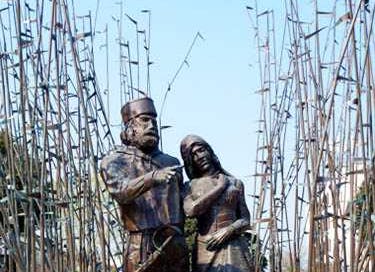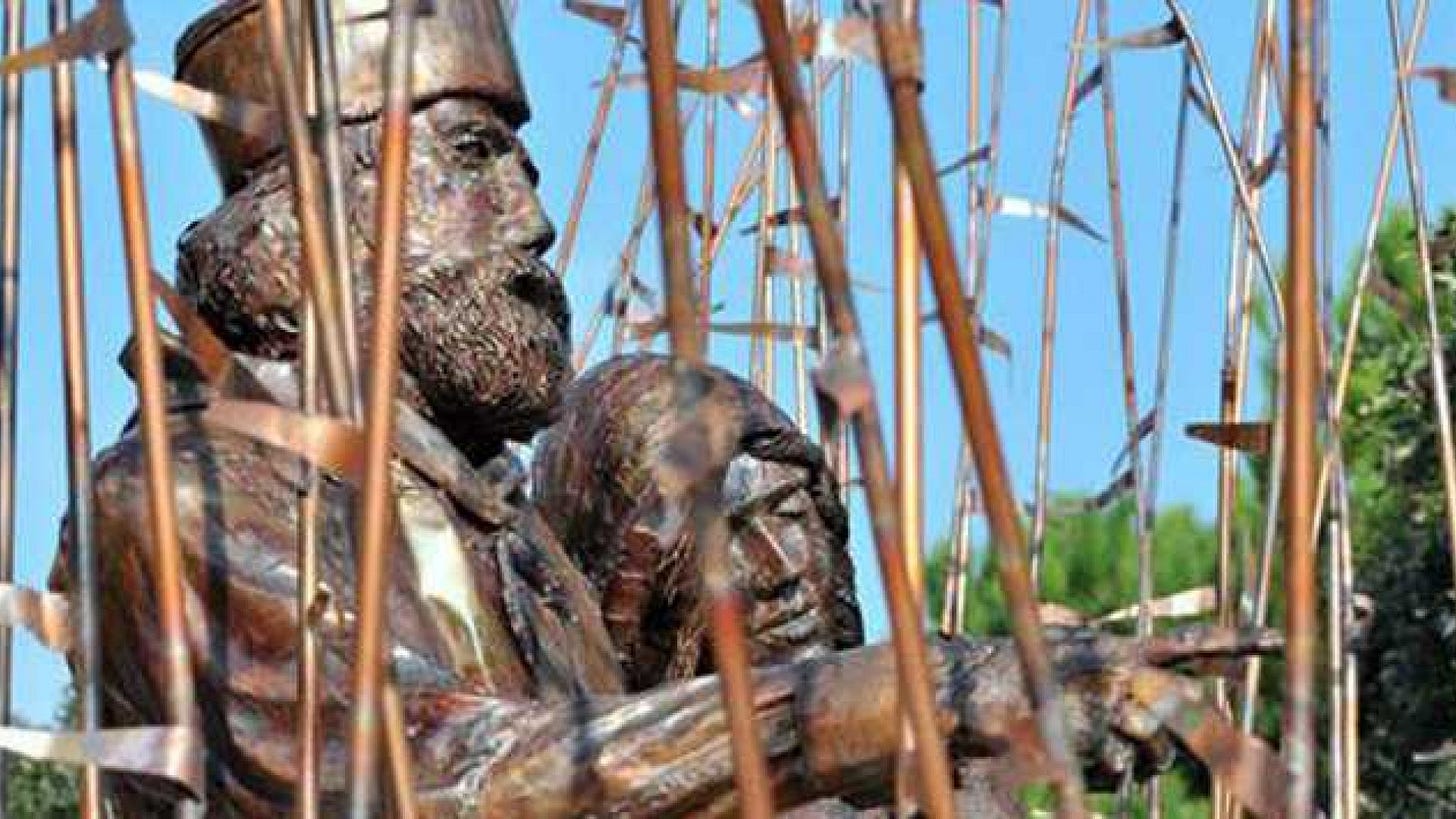Giuseppe and Anita Garibaldi running away from the Papal troops in the marshes near Comacchio in 1849. A monument in bronze by Nicola Zamboni e Sara Bolzani located in Ugo Bassi Road, in Porto Garibaldi. Anita didn’t survive the hardness of this escape, but the story may have a dark side.
Shiny heroes seem to be out of fashion, nowadays, and the attempt to mythologize the deeds of our rulers often backfires: just think of what happened to the people who may have been thought to be heroes in their fight against the COVID-19 pandemic!
One of the last European heroes who didn’t experience the fate of being hanged for his deeds is Giuseppe Garibaldi. The Italian “hero of the two worlds” was nearly deified for his role in the Italian unification war of 1860. Up to not long ago, “Speaking ill of Garibaldi” was an unforgettable sin in Italy, fully unspeakable, and guaranteed to generate social ostracism for the careless speaker.
Today, Garibaldi is a little forgotten, but his presence is still felt in the thousands of statues in his honor that litter Italy. They are a normal view almost everywhere, but not something people pay much attention to. They are, mostly, all the same. Same shiny hero on foot or on a horse, but nothing more.
Yet, I got curious when I saw the picture of a monument to Garibaldi erected in the town that carries his name, “Porto Garibaldi” near the town of Ferrara in Italy. You see it at the beginning of this post. It is an anomalous image that shows Garibaldi together with his wife, Anita, evidently suffering, while the couple stands on a boat in a swampy environment.
It is one of those things that lurk somewhere inside your mind, surfacing at the strangest moments. I remembered enough of what I had studied at school to remember that Anita died of some sickness while accompanying her husband in a military adventure. But how could it be that the shiny hero Giuseppe Garibaldi allowed his wife to accompany him while running for his life in a swampy land?
For one of those weird coincidences that seem to be a rule of life, not long after having seen that image, I found a small booklet in a used books stall that told exactly the story I was interested in. Written by Giovanni Fabbrini 50 years after the death of the “hero,” It was apologetic, and praised both Garibaldi and Anita.
But not everything was so clear. Let’s tell the story we know. In 1848, Garibaldi returned to Italy from South America and joined the Roman Republic forces during the First Italian War of Independence. In 1849, a French force intervened to expel the rebels from Rome, and Garibaldi, defeated, ran North with a small number of followers with the idea of reaching Venice, where the Republican Forces were still fighting. His wife, Anita, had joined him in Rome, and followed him in the attempt. She was six-months pregnant of their 5th child.
Garibaldi’s forces melted down in the escape and he found himself almost alone. Anita fell ill and died on June 9th in a swampy area near the town of Comacchio. Here is the place where she died, from Fabbrini’s book.
Garibaldi survived and managed to flee to New York, remaining overseas for several years.
In August 1849, someone made a grisly discovery in Comacchio. An arm of the hastily buried body of Anita Garibaldi had resurfaced. The cadaver was exhumed and taken to Ravenna, where an autopsy was performed by Professor Andrea Fontanella of the Fatebenefratelli hospital. Despite the state of putrefaction of the body, Prof. Fontanella noted some suspicious elements. The main one was that the trachea and the larynx were damaged and broken. Noting also evident signs of pressure on the neck, he concluded that someone had choked Anita to death.
If Anita had been killed, then the killer could only have been the last person who had been with her: her husband, Giuseppe Garibaldi. IAs a general, Garibaldi was not known to spare the lives of his soldiers and, still today, in Italy we say that doing something “Garibaldi-Style” (alla Garibaldina) means rushing forward at full speed, not worrying too much about the consequences. Just the fact that he had accepted to take his 6-month pregnant wife in that mad adventure in Rome tells us something of his way of thinking. So, in that dramatic moment, running away, hunted by the police, he might well have concluded that the feverish Anita would have died anyway and that it was better to put her out of her misery. That would give him a chance to run away faster.
Garibaldi came back to Italy in 1854 and, in 1860, he went on to bring down the Kingdom of Naples, ushering the unification of Italy. In the atmosphere of beatification that turned Garibaldi into a national hero, the idea that he could have killed his wife quickly became unthinkable and unspeakable. No further autopsies appear to have been performed, but the authorities reversed Fontanella’s conclusions, claiming that other factors could have caused the damage observed to Anita’s trachea. Garibaldi was never accused of having murdered his wife and, still today you’ll find very few documents mentioning the story of the autopsy. Those which do, vehemently deny the possibility that Anita didn’t die of natural causes.
In practice, we will never know what happened in that fated day of 1849 in Comacchio. What we can say is that often great men are not so great as they are described in history book. We may remember Ana Maria de Jesus Ribeiro (Anita Garibaldi), born in Brazil in 1821, as a brave woman who perhaps didn’t realize the risks she was taking, but probably thought she was doing what she had to do.










